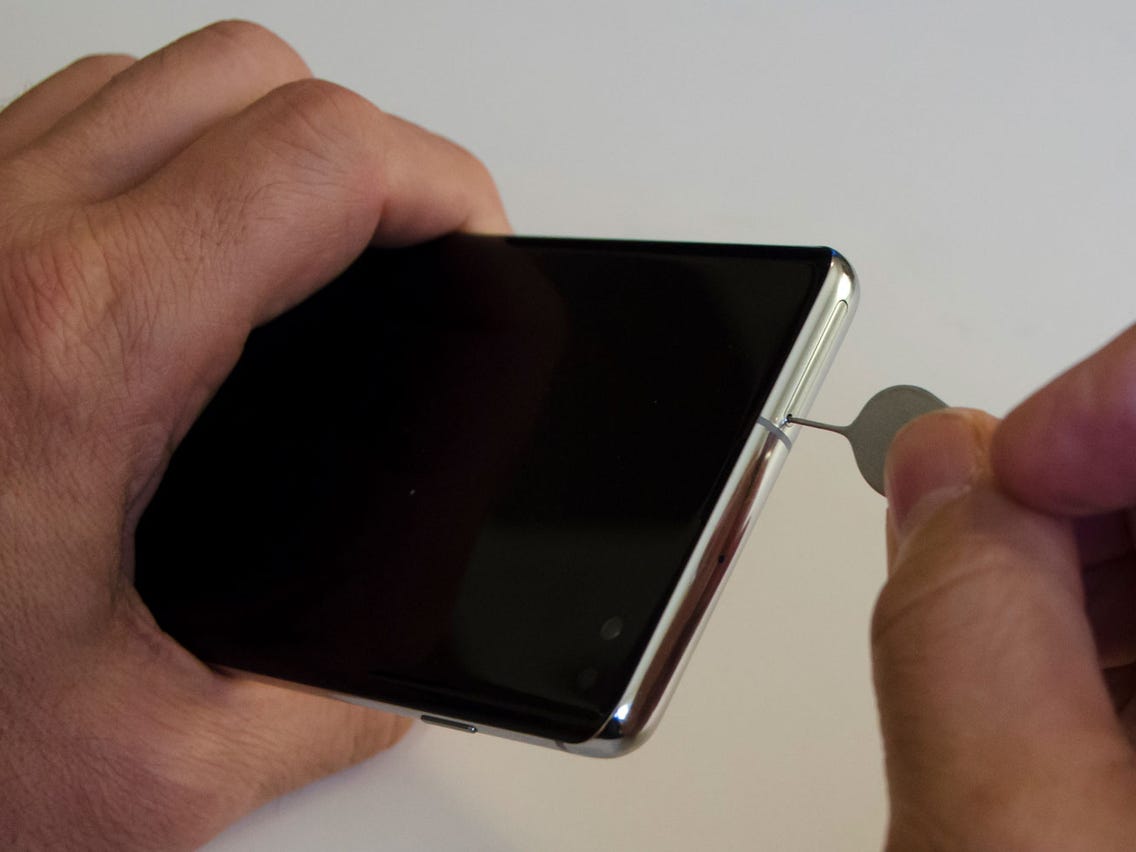The Samsung Galaxy S10 Plus is a powerful and popular smartphone that offers a range of impressive features. One essential component of this device is the SIM card, which plays a crucial role in connecting to cellular networks and enabling communication.
The Galaxy S10 Plus uses a Nano SIM card, which is the smallest SIM card size available. This compact size allows for more space within the device and ensures a seamless user experience.
One of the standout features of the Galaxy S10 Plus is its expandable storage capability. In addition to the SIM card slot, the device also includes a dedicated microSD card slot. This means that users have the option to insert a microSD card, allowing them to expand the device’s storage capacity.
With the S10 Plus, users can take advantage of the maximum external memory of up to a whopping 512GB. This additional storage space is ideal for those who frequently capture photos and videos, download large files, or have a vast music and app library. It provides peace of mind that there will always be enough space to store important data and media.
To insert a SIM or microSD card into the Galaxy S10 Plus, users need to locate the SIM and microSD tray, which is situated on the top left side of the device. By using a SIM tool or a small pin, they can gently insert it into the small hole to eject the SIM and microSD tray. This allows for easy access and insertion of the cards.
It’s important to note that the Galaxy S10 Plus offers two variations when it comes to SIM card usage. Users can opt for a single SIM (Nano-SIM) version or a hybrid dual SIM (Nano-SIM, dual stand-by) version. The hybrid dual SIM version allows users to insert either two SIM cards or a SIM card and a microSD card simultaneously. This flexibility caters to different needs and preferences.
Additionally, the Galaxy S10 Plus boasts an IP68 rating, making it dust and water-resistant. This means that the device can withstand immersion in up to 1.5 meters of water for 30 minutes, providing peace of mind for those who may accidentally expose their phone to water.
The Samsung Galaxy S10 Plus offers a range of impressive features, including expandable storage through a microSD card. With a maximum external memory of up to 512GB, users have the ability to store a significant amount of data and media. The SIM card slot, along with the microSD card slot, is easily accessible, allowing for convenient insertion of these essential components. Whether you opt for a single SIM or hybrid dual SIM version, the Galaxy S10 Plus provides flexibility and functionality.

What SIM Card for Samsung S10 Plus?
For the Samsung S10 Plus, you will need a Nano SIM card. The Nano SIM card is the smallest SIM card size available and is widely used in most modern smartphones, including the S10 Plus. It is important to note that the S10 Plus supports dual SIM functionality, allowing you to use two Nano SIM cards simultaneously if desired.
The Nano SIM card is smaller than its predecessors, the Micro SIM and Standard SIM cards. It offers more space within the device for other components and allows for a slimmer design.
To use a Nano SIM card with your Samsung S10 Plus, you will need to obtain one from your mobile carrier. Most carriers provide Nano SIM cards when you sign up for a new phone plan or upgrade your existing plan. If you already have a Nano SIM card from a previous phone, you can simply transfer it to your S10 Plus.
If you need additional storage for your S10 Plus, it is worth mentioning that the device also supports expandable memory through a microSD card. You can insert a microSD card into the designated slot on the device to increase its storage capacity. The S10 Plus supports microSD cards of up to 512GB, allowing you to store more photos, videos, and files on your device.
The Samsung S10 Plus requires a Nano SIM card for cellular connectivity, and it also supports expandable memory through a microSD card for additional storage.
Where Do You Put the SIM Card in a S10 Plus?
To insert a SIM card or microSD card in a Samsung Galaxy S10 Plus, you need to locate the SIM & microSD tray. This tray is positioned on the top left side of the device. To access it, you will need a SIM tool or a small pin.
Here are the steps to insert the SIM card or microSD card:
1. Take the SIM tool or a small pin and insert it into the small hole on the top left side of your S10 Plus. Apply gentle pressure until the tray pops out.
2. Carefully pull out the SIM & microSD tray from the device.
3. Identify the appropriate slot for your SIM card. The S10 Plus supports dual SIM cards, so there are two slots available. If you only have one SIM card, use the slot labeled “SIM 1.”
4. Place your SIM card into the slot, ensuring that the gold contacts on the card are facing down. Make sure it fits securely into the slot.
5. If you also want to insert a microSD card, locate the microSD card slot on the SIM & microSD tray. It is usually positioned below the SIM card slots.
6. Insert the microSD card into the slot, again ensuring that it is securely fitted.
7. Once you have inserted the SIM card and/or microSD card, carefully push the SIM & microSD tray back into the device until it is fully inserted.
8. You can now power on your Samsung Galaxy S10 Plus and set it up with your SIM card and microSD card properly installed.
Remember to handle the SIM card and microSD card with care to avoid any damage.
How Many SIM Cards Can You Put in a Samsung S10 Plus?
The Samsung S10 Plus offers two options for SIM cards. You can either use a single SIM card (Nano-SIM) or go for the Hybrid Dual SIM option (Nano-SIM, dual stand-by). With the Hybrid Dual SIM, you have the flexibility to use two SIM cards simultaneously, allowing you to manage separate phone numbers or take advantage of different mobile networks. It’s worth noting that the Samsung S10 Plus is also IP68 dust and water-resistant, capable of withstanding submersion in water up to 1.5 meters for 30 minutes, providing added durability and peace of mind.
Conclusion
The Samsung Galaxy S10 Plus offers a versatile and convenient SIM card option. The device supports both a single SIM (Nano-SIM) and a hybrid dual SIM (Nano-SIM, dual stand-by) configuration. This means that users can choose to use either one SIM card and have the flexibility to switch between different carriers or plans, or they can opt for dual SIM functionality and use two SIM cards simultaneously.
The SIM tray for the Galaxy S10 Plus is located on the top left side of the device. It is easily accessible by inserting a SIM tool into the small hole to eject the SIM tray. This allows users to easily insert or remove their SIM cards as needed.
Furthermore, the Galaxy S10 Plus also supports expandable storage with a microSD card. This means that users can insert a microSD card into the SIM tray to increase the device’s storage capacity. The Galaxy S10 Plus supports microSD cards with a maximum capacity of up to 1TB, providing ample space for storing photos, videos, and other files.
Additionally, the Galaxy S10 Plus is IP68 dust and water-resistant, offering added protection for the SIM card and microSD card. This ensures that the device is capable of withstanding accidental exposure to dust or water up to a depth of 1.5 meters for 30 minutes.
The SIM card options on the Samsung Galaxy S10 Plus provide users with flexibility and convenience. Whether it’s using a single SIM card or taking advantage of dual SIM functionality, combined with expandable storage, the Galaxy S10 Plus offers a seamless and customizable user experience.













